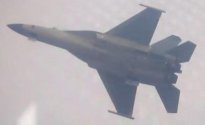is that a side EOTS like in the J-36??Another image of Hongdu's new twin-engined, twin-tailed jet trainer (JL-X // JL-15 ???) ... but is it real or again AI enhanced?
View attachment 165731
@huitong
You are using an out of date browser. It may not display this or other websites correctly.
You should upgrade or use an alternative browser.
You should upgrade or use an alternative browser.
Chinese Trainer Aircraft (JL-8, JL-9, JL-10 (L-15), etc.)
- Thread starter tphuang
- Start date
Another image of Hongdu's new twin-engined, twin-tailed jet trainer (JL-X // JL-15 ???) ... but is it real or again AI enhanced?
View attachment 165731
@huitong

Same one?
Last edited:
YesView attachment 165753
Same one?
Future lead in Trainer aircrafts would use derivatives of engines to train for a certain aircraft. Trainee pilots would get chance to train on aircrafts with different types of engine derivatives for other set of aircraft type. Pertaining to requirements of the trainee batch training aircrafts would use different engines. Aircraft would not have a single engine for every segment of the training batches. It would be to fast track the training leading to transition to operational aircrafts.
